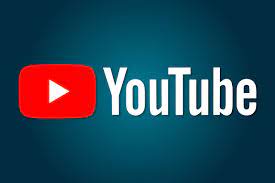Checklist of 30 items you can use to improve your SEO and help you rank higher
Here's a checklist of 30 items you can use to improve your SEO:
This checklist includes 30 items that you can use to improve your search engine optimization (SEO) and help you rank higher in search engine results pages (SERPs). The items on the checklist cover a wide range of SEO strategies and tactics, including keyword research, on-page optimization, internal and external linking, image optimization, page speed, mobile-friendliness, security, analytics, content updates, social media, user experience, local SEO, structured data, keyword tracking, backlinks, competitor analysis, technical SEO, accessibility, and testing. By implementing these items on your website, you can improve your visibility and credibility in the eyes of search engines, and attract more high-quality traffic to your website.
-
Keyword research: Make sure you have a list of relevant and popular keywords to target in your content.
-
On-page optimization: Check that your page titles, meta descriptions, and headings include your target keywords, and that your content is well-written and easy to read.
-
Internal linking: Use internal links to link to other pages on your website, and make sure your navigation menu is clear and easy to use.
-
External linking: Include external links to high-quality, relevant websites in your content to improve your credibility and search engine rankings.
-
Image optimization: Optimize your images by using descriptive file names and alt text, and compressing them to reduce their size.
-
Page speed: Test your website's page speed and make any necessary optimizations to improve its performance.
-
Mobile-friendliness: Make sure your website is mobile-friendly and looks good on all devices.
-
Security: Check that your website is secure and has an SSL certificate installed.
-
Analytics: Set up analytics tracking on your website to monitor your traffic and engagement levels.
-
Content updates: Regularly update your content to keep it fresh and relevant, and to improve your search engine rankings.
-
Social media: Use social media to promote your content and engage with your audience.
-
User experience: Make sure your website is easy to use and provides a good user experience.
-
Local SEO: If you have a physical location or serve a specific geographical area, optimize your website for local search by including your location in your page titles and meta descriptions, and by creating local business listings on directories like Google My Business.
-
Structured data: Use structured data (such as schema markup) to provide search engines with additional information about your website, and to improve the way your content appears in search results.
-
Keyword tracking: Monitor your rankings for your target keywords and make any necessary adjustments to your website and content to improve your search engine rankings.
-
Backlinks: Obtain high-quality backlinks from other websites to improve your credibility and search engine rankings.
-
Competitor analysis: Monitor your competitors and their website and content strategies to stay ahead of the game and identify opportunities for improvement.
-
Technical SEO: Check for any technical issues on your website that could be hindering your search engine rankings, such as broken links, duplicate content, or crawl errors.
-
Accessibility: Make sure your website is accessible to users with disabilities and complies with web accessibility standards.
-
Testing: Test your website and its various elements (such as forms, buttons, and links) to ensure they are working properly and providing a good user experience.
-
Create a sitemap: A sitemap is a list of all the pages on your website, and it helps search engines crawl and index your content.
-
Use long-tail keywords: Long-tail keywords are more specific and less competitive than short-tail keywords, and they can help you attract targeted traffic to your website.
-
Use H1 and H2 tags: H1 and H2 tags are used to structure your content and make it easy for search engines and users to understand.
-
Use alt tags for images: Alt tags are text descriptions of images, and they are used by search engines to understand the content of your images.
-
Create a content calendar: A content calendar can help you plan and schedule your content, and ensure that you are consistently publishing fresh, relevant, and high-quality content.
-
Use social media sharing buttons: Make it easy for users to share your content on social media by including social media sharing buttons on your website.
-
Encourage user-generated content: User-generated content, such as reviews and comments, can help improve your credibility and search engine rankings.
-
Optimize for voice search: More and more users are using voice search to find information online, so make sure your website is optimized for voice search by using natural language and long-tail keywords.
-
Monitor your online reputation: Monitor your online reputation and respond to any negative feedback or reviews in a timely and professional manner.
-
Use a content delivery network (CDN): A CDN can help improve your website's performance and speed by distributing your content across multiple servers around the world.
If you found our content useful, please consider using one of our social sharing buttons to give us a mention or a backlink.
Thanks for visiting!
For more tips on SEO, here's a great video to give you more ideas on how to improve SEO:
Recent Blog Posts
How to Start an SEO Campaign about Electric Cars
How to Start an SEO Campaign about Electric Cars Electric cars have become an increasingly...
How to Start an SEO Campaign for a Local Grocery Store
How to Start an SEO Campaign for a Local Grocery Store Owning a local grocery...
Mastering Google Rankings: A Comprehensive Guide to SEO Success
Unlocking Google’s Top Spot: The Comprehensive Guide to SEO Success Welcome to your journey towards...
Step-by-Step Guide: Creating & Managing an SEO Campaign for Tax Benefits
Step-by-Step Guide: Creating & Managing an SEO Campaign for Tax Benefits 1. Research and Define...
Step-by-Step Guide: Creating and Managing an SEO Campaign for Annuities and Retirement Strategies
Step-by-Step Guide: Creating and Managing an SEO Campaign for Annuities and Retirement Strategies 1. Understanding...
How to Create and Manage an SEO Campaign for Your Food and Grocery Blog
If you’re running a food and grocery blog, driving traffic to your website is essential....
Maximizing Your Real Estate SEO Campaign in a High Mortgage Rate Market
Maximizing Your Real Estate SEO Campaign in a High Mortgage Rate Market In the ever-competitive...
How to Create and Manage an Effective SEO Campaign
Are you looking to boost your website’s visibility and drive traffic by leveraging the power...
Unmasking the Spread of Disinformation: How X Amplified Confusion in the Israel-Hamas Crisis
In the digital age, information spreads faster than wildfire, and the recent Israel-Hamas conflict is...
AI-Powered Content Marketing: From Ideas to Optimization
In the digital age where content reigns supreme, marketers are on the lookout for ways...

Jeff M.
CEO / Co-Founder
Enjoy the little things in life. For one day, you may look back and realize they were the big things. Many of life's failures are people who did not realize how close they were to success when they gave up.
Popular Tools
Recent Posts











